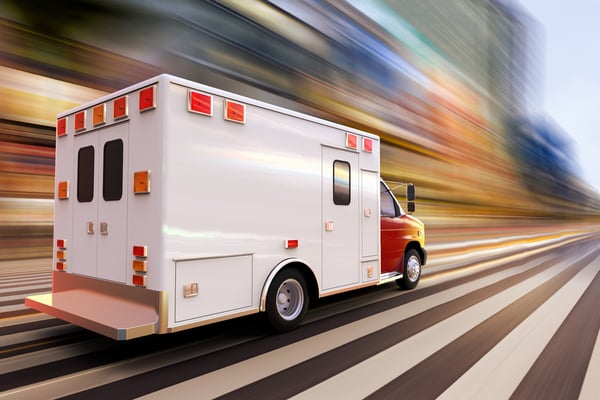
Portable medical suction is an indispensable part of every first responder’s toolkit. Yet research consistently suggests that operators may not know how to use suction devices properly. Your skills can grow rusty, especially if you work for an agency whose population does not routinely require portable medical suction.
Patients’ lives hang in the balance. Here are five things you need to know to ensure effective, safe suction each and every time.
You Need to Test Your Equipment
Equipment failure is common. A study found a failure rate of 2.4% in suction devices. Most failures were due to battery issues.
This points to the importance of regular equipment testing. Especially in agencies where portable suction machines go unused for weeks or months, regular testing can prevent a tragedy when it’s time to use these life-saving devices. Your suction machine should come with instructions for proper testing. At a minimum, do the following at the start of each shift:
- Check to ensure no parts are loose and all are fully connected.
- Power on the machine and check for warning lights.
- Look for visible damage to the machine.
Maintaining Equipment in the State of Readiness is Key
A study of wall-mounted suction units found that just 14% were maintained in a state of readiness, and 70% of devices did not have all of their parts present. This unpreparedness delays treatment and is totally preventable.
Statistics are probably similar, or worse, on ambulances. It’s not enough to invest in a high-quality device and regularly test it; you must ensure it is ready to use. This means:
- Ensuring the device is fully assembled at all times
- Sanitizing and cleaning the device after each use
- Storing all disposables and other parts together
- Maintaining a ready supply of catheters in various sizes
- Disposing of any catheters or other devices that do not fit the machine
- Keeping the device on charge whenever it is not in use.
Suctioning is Not One-Size-Fits-All
For safe suctioning, it’s important to choose an appropriately sized catheter. While there are no absolute contraindications for suctioning the airway, hypoxia, and bradycardia can increase the risk. It is important to weigh the risks and benefits while monitoring patients for signs of complications.
Providers must also be mindful of how individual factors can complicate suctioning. Consider the following:
- People with dentures and loose teeth can choke when suctioning dislodges these structures.
- Obesity significantly increases the risk of airway-related complications.
- Age can weaken the respiratory tract, increasing the risk of iatrogenic injuries.
- Many injuries cannot be predicted. Don’t assume a patient’s low-risk status means they won’t experience complications.
Patient Histories Can Save Lives
The more information you have about a patient, the better equipped you will be to make sound decisions and monitor for complications. If a loved one is nearby, ask them about the patient’s respiratory history as you prepare the equipment. It’s also important to ask about allergies, recent medical history such as infections, and whether the patient has cognitive deficits that may undermine their ability to understand or comply with treatment.
Practice Makes Perfect
First responders face high-stress days that may cause them to spend their nights second-guessing themselves. Amid the chaos of injured patients and panicked loved ones, your adrenaline will be pumping, and your critical thinking skills may not operate at peak capacity. It’s not enough to read a textbook and assume you’ll be ready.
Training and drilling airway management skills can compensate for the inevitable skill decline that occurs in moments of high stress. Especially if your agency only rarely uses medical suction, you must regularly conduct training sessions on suctioning a wide range of patients, including the elderly, children, people with cognitive disabilities, and patients with mobility impairments.
The right equipment quickly and safely clears the airway. The wrong equipment can become clogged, lose suction over time, or even injure patients. It’s not enough to master an excellent technique. You must also work with premium equipment. For help choosing the right on board medical suction device for your team, download our free guide, The Ultimate Guide to Purchasing a Portable Emergency Suction Device.
Editor's Note: This blog was originally published in November, 2018. It has been re-published with additional up to date content.
















